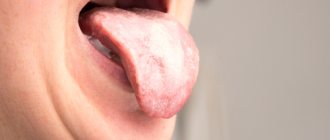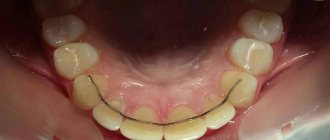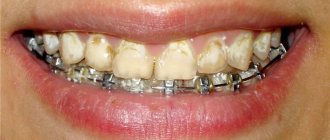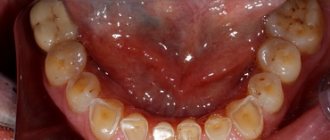Recurrent or chronic candidiasis develops as a result of incorrect or untimely treatment of the acute form. The causative agent of the disease is the yeast fungus Candida, which lives in moderate quantities on the skin and mucous membranes of almost every healthy person. The growth and reproduction of the infection is controlled by the immune system, but at the slightest weakening of the protective functions, the pathogen is activated, causing characteristic symptoms. Treatment of chronic candidiasis in women should be supervised by a gynecologist. The regimen and duration of therapy is determined individually, taking into account the severity of the course, the presence of associated complications, and general health. All medications must be used strictly according to medical prescriptions. Self-medication in the recurrent form is fraught with negative consequences. Medical specialists will determine the cause of candidiasis, and then select the most effective drugs that will help you quickly and painlessly get rid of the disease and pathological symptoms.
Features of the chronic form of candidiasis
The causative agent of vaginal candidiasis is a fungus of the genus Candida, which belongs to the opportunistic microflora. The microorganism lives on the skin and mucous membranes of almost every person, and its growth and activity are suppressed by the immune system. Any malfunction of the immune system disrupts the balance of microflora and leads to the activation of pathogenic bacteria and fungi. In this situation, acute candidiasis develops, characterized by severe, vivid symptoms and requiring immediate treatment under the supervision of a physician. If you self-medicate or let the disease take its course, it becomes chronic, which is much more difficult to combat.
Chronic recurrent candidiasis is characterized by periodic exacerbations, which are repeated 4 or more times during the year. A fungal disease occurs in 2–3% of women of reproductive age. If relapses occur no more than 4–5 times a year, it means that the infection develops passively, does not cause serious complications and is more effectively amenable to drug therapy. But when the symptoms of thrush bother you every month, it is better not to hesitate to visit a doctor, because such a course of a chronic disease indicates the progression of severe inflammatory processes in the organs of the genitourinary system.
Vaginitis is a widespread problem and one of the most common reasons for visiting an obstetrician-gynecologist. Among the various variants of vaginal infection, the undisputed leaders are considered to be vulvovaginal candidiasis (VVC) and bacterial vaginosis (BV), detected respectively in 17-39% and 22-50% of women with pathological discharge (leucorrhoea) from the vagina [5]. The prevalence of VVC and BV is extremely high. Approximately 75% of women of reproductive age experience VVC at least 1 time during their life, 40-45% experience 2 recurrences of the disease or more. Most cases of VVC are classified as uncomplicated candidiasis [8], but in approximately 10% of patients, VVC has a complicated course.
Bacterial vaginosis is considered the most common form of vaginal disease and occurs in approximately 30% of women [4]. Despite the indisputable infectious origin of VVC and BV, their infectiousness to a sexual partner has not been proven [4, 13], and they are not classified as sexually transmitted infections (STIs). However, a number of factors related to sexual behavior increase the risk of these diseases. These include: the beginning of sexual activity, the practice of orogenital sex, changing sexual partners, frequent vaginal douching [4].
Problems associated with VVC and BV cause patients a lot of inconvenience, associated not only with changes in the quantity and quality of vaginal discharge, but also with burning, skin irritation, a feeling of dryness, dyspareunia, and dysuria [5]. In addition to immediate discomfort, BV and VVC increase the risk of spontaneous abortion, premature birth, ante- and intrapartum infection of the fetus [12, 19, 22], postpartum endomyometritis, contribute to the development of cervicitis, inflammatory diseases of the pelvic organs involving the urinary system, the spread of viral infection, including HIV and genital herpes, gonorrhea, chlamydia, trichomoniasis, increase the risk of inflammatory postoperative complications [7, 33, 38].
According to the USA, Europe, and Canada, the most common causative agent of VVC is Candida albicans
(about 80-90% of cases).
The remaining fungi of the genus Candida
are collectively called non-
albicans
C. glabrata
is the most common [37].
According to the results of the epidemiological study ARTEMISK DISK in Russia, the main causative agent of candidiasis (various localizations, including VVC) was C. albicans
- 76.1%, in second place was
C. glabrata
- 5.3%, then
C. krusei
- 3 .4%,
C. parapsilosis
- 3.1%, which generally corresponds to the prevalence of certain types of fungi in North America and Europe [32].
Vulvovaginal candidiasis caused by Candida
non-
albicans
is regarded as a complicated disease. In addition, complicated forms of VVC include severe vaginitis, VVC in individuals with a reduced immune response, and recurrent VVC.
It is not entirely clear what exactly causes the frequent (4 times a year or more) repeated episodes of the disease. Systemic immunosuppression cannot serve as a sufficient justification for recurrent VVC. This is clearly demonstrated by observations of HIV-infected patients who have vaginal colonization with Candida
increases significantly, but the frequency of recurrent VVC increases moderately, far behind the increase in the frequency of episodes of oropharyngeal candidiasis [28]. It is more likely that relapses of VVC are caused by suppression or reduction of local protective immunoregulatory mechanisms with changes in the cytokine profile [18]. There is a version that the cause of symptomatic candidiasis is increased local sensitivity to fungi [15].
Diagnosis of VVC is based on the detection of budding yeast cells and/or pseudomycelium by light microscopy of native preparations or microscopy of Gram-stained smears. In case of complicated VVC, a cultural examination (inoculation on a nutrient medium) is recommended. Candida
spp.
- single-celled microorganisms measuring 6-10 microns. Many Candida
spp.
dimorphic, forming blastomycetes (bud cells), pseudomycelia (chains of budding yeast cells) and/or mycelium. Unlike mycelium, pseudomycelium does not have a common shell or partitions. The causative agents of Candida
non-
albicans,
especially
C. glabrata,
do not form pseudomycelium and are poorly recognized by light microscopy, and therefore the presence of VVC symptoms with negative microscopy results dictates the need to perform a culture test.
For BV, the etiological role of a specific microorganism as the sole cause of the disease has not yet been proven. Gardnerella vaginalis is most often associated with BV.
and
Mobiluncus curtisii,
but these microorganisms can also be detected in healthy women [16].
The advent of nucleic acid amplification methods (NAAT) and polymerase chain reaction, which make it possible to identify microorganisms that are difficult to cultivate, has expanded the microbial palette of BV. It turned out that, in contrast to the microbial spectrum of the vaginal contents of healthy women (from 1 to 6 species of bacteria with a predominance of lactobacilli), women with BV have a significantly greater diversity of microorganisms (from 9 to 17 per sample, on average 12.6), and in each sample, 58% of completely new clones were identified [11]. In total, 35 species of unique bacteria were identified in women with BV, including several species that did not have close relatives, and Atopobium vaginae
[11, 14 , 39].
In addition to A. vaginae,
the list of unculturable microorganisms was supplemented by BV-associated bacteria - BVAB 1, BVAB 2, BVAB 3,
Megasphera
spp.,
Eggerthella
spp.
and Leptotrichia
spp. [17, 20].
To assess the species diversity of the bacterial flora found in BV, a DNA biochip was developed [1], the use of which made it possible to identify 29 different types of microorganisms in 80 women with BV [2], with A. vaginae being most often identified.
It is important that
A. vaginae
was detected with the highest frequency during a long-term recurrent course of the disease, independently of other BV-associated microorganisms
(G. vaginalis, Mobiluncus
spp.,
Ureaplasma urealyticum, Mycoplasma hominis)
[2].
Although A. vaginae
has been detected in vaginal fluids not only in patients with BV but also in healthy women, the prevalence ratio of
A. vaginae
among patients with BV is clearly higher than among healthy women [1].
Whatever microorganisms the most advanced diagnostic techniques identify in women with impaired vaginal microbiocenosis, no one doubts that BV is characterized by the replacement of lactobacilli by opportunistic microorganisms, mainly anaerobic ones. Therefore, in clinical practice, the diagnosis of BV is based not on the identification of certain microorganisms, but on the basis of clinical and laboratory criteria. In this case, the criteria most often used are R. Amsel et al. (1983), when diagnosis requires identification of 3 out of 4 signs, only one of which (detection of “key” cells in Gram stain) is purely microbiological, and the rest are clinical. Less commonly used are the criteria of R. Nugent et al. [21], when Gram staining determines the corresponding bacterial morphotypes, based on the ratio of which the diagnosis is made.
Despite the obvious difference between aerobic fungal and polymicrobial, predominantly anaerobic, infection, VVC and BV can be combined, creating additional difficulties in treatment. Diagnosis of such a mixed infection is based on microscopy of a Gram-stained smear and/or culture results. Microscopy of a vaginal smear reveals predominantly superficial epithelium and key cells. The leukocyte reaction reflects the presence of inflammation. With a large (massive) number of microorganisms, anaerobes and gardnerella dominate, yeast cells and/or fragments of pseudomycelium are present, lactobacilli are absent. Culture studies demonstrate a massive (more than 9 lg CFU/ml) number of microorganisms, but under aerobic conditions only Candida fungi are present.
Lactobacilli are absent or their titer is very low; Bacteroides, Gardnerella, anaerobic cocci, etc. dominate.
The combination of VVC and BV requires simultaneous treatment of both infections. But even in the absence of clinical and laboratory signs of VVC, treatment of BV with antibiotics can lead to the development of symptoms of candidiasis in cases of previous colonization of the vagina by fungi [30].
There are two effective ways to treat bacterial vaginosis. One of them is metronidazole or its derivatives from the group of 5-nitroimidazoles. True resistance of anaerobic microorganisms to nitroimidazoles is a rare phenomenon. As a rule, the effectiveness of metronidazole for BV in daily doses of 800 to 1200 mg for 1 week exceeds 90%, and the effect persists for 1 month in 80% of patients. Simultaneous treatment of BV with metronidazole at a dose of 2 g is effective in relieving symptoms, but the percentage of relapses is higher than when using a weekly course of the same drug. A significant disadvantage of oral administration of metronidazole is its poor tolerability, and tinidazole in a 5-day regimen, although better tolerated, has the same potential for side effects as metronidazole [23]. Local therapy with 2% clindamycin cream or metronidazole gel is as effective as systemic therapy [12, 27], while the clinical effectiveness of clindamycin has been demonstrated even in the presence of resistance of microorganisms detected in tests to this antibiotic [7, 27]. According to the US Centers for Disease Control (CDC), various forms of metronidazole (tablets and gel) and 2% clindamycin cream (suppositories) are the standard treatment for BV in the United States.
Metronidazole is prescribed at a dose of 500 mg 2 times a day for 7 days, or 0.75% metronidazole gel 5 g intravaginally once a day for 5 days, or 2% clindamycin cream 5 g intravaginally for 7 days. As an alternative, these recommendations suggest treatment with clindamycin 300 mg orally 2 times a day for 7 days or clindamycin suppositories 100 mg intravaginally at night for 3 days in a row. Undoubtedly, the shortest treatment regimen, which involves a 3-day course of clindamycin suppositories, is the most acceptable for women. As for the administration of single-stage treatment with metronidazole (orally at a dose of 2 g), the convenience of this regimen is offset by its relatively low effectiveness, and therefore it is currently not recommended by the CDC, even as an alternative option [12]. European recommendations [13] for the management of patients with vaginal discharge also indicate the low effectiveness of the simultaneous use of metronidazole at a dose of 2 g for BV. According to Russian recommendations [3], the preferred method is local (intravaginal) administration of metronidazole or clindamycin: clindamycin, cream 2% 5.0 g intravaginally at night, 6 days; Metronidazole, gel 0.75% 5.0 g intravaginally at night, 5 days. An alternative regimen involves the use of clindamycin suppositories (100 mg) for 3 days. Orally 5-nitroimidazoles or clindamycin are recommended to be prescribed only if intravaginal therapy is ineffective: metronidazole 500 mg orally 2 times a day for 7 days; clindamycin 300 mg 2 times a day for 7 days; ornidazole 500 mg orally for 5 days.
Treatment-resistant cases of BV pose a serious problem [40]. If standard therapy with metronidazole is ineffective, it can be repeated with an increase in duration, and if it fails again, another attempt at repetition is recommended with a preliminary course of antibiotic treatment in order to eliminate the accompanying aerobic microflora that can reduce the effectiveness of the nitro group of 5-nitroimidazoles on anaerobes [12, 13]. However, the feasibility of this approach is controversial for two reasons. First, long courses of oral metronidazole are poorly tolerated. Secondly, the reason for the lack of effect of therapy may not be aerobic microorganisms, but anaerobes associated with BV that are insensitive to nitroimidazoles.
Uncultivable or difficult to cultivate microorganisms may be resistant to metronidazole, and they also provide a persistent relapsing course of BV. Repeated episodes of vaginitis are observed in 30% of women within 3 months after treatment [40]. A series of studies conducted in Australia showed that after oral administration of metronidazole, relapses of BV within 1 year of observation were observed in 58% of patients [9]. Risk factors for relapse were associated with a previous history of BV, regular sexual activity with a regular partner, and lesbianism. Condom use did not affect the risk, and hormonal contraception had a protective effect. In a molecular analysis of noncultured organisms, the study authors found that failure of long-term response to metronidazole therapy was significantly more likely to be associated with the detection of A. vaginae
[10].
The inability to identify unculturable microorganisms in routine practice before the start of therapy becomes the key to its ineffectiveness [7, 11]. Resistance of A. vaginae
to metronidazole has been demonstrated repeatedly [14].
A number of publications [7, 41] have shown that A. vaginae
is more sensitive to clindamycin than to metronidazole
in
in vitro Clinical studies confirm a significantly higher effectiveness of standard intravaginal therapy for BV associated with A. vaginae,
clindamycin (2% cream, 5 g intravaginally for 6 days) compared to metronidazole (0.75% gel, 5 g intravaginally for 5 days, at night) .
Similar results were obtained in studies comparing topical therapy with metronidazole and clindamycin for BV, presumably associated with Mobiluncus
[26].
Apparently, the sensitivity characteristics of microorganisms involved in the development of BV are the leading factor in the failure of treatment or the increased frequency of relapses. Strategies for treating sexual partners and recolonizing the vagina with lactobacilli have not demonstrated a significant effect in reducing the frequency of relapses and normalizing the vaginal microbiota [6, 40], although individual studies on the use of eubiotics and probiotics provide encouraging results [24]. At the same time, the participation of aerobic microorganisms, including fungi, in worsening the prognosis of treatment for BV cannot be discounted. A comparison of metronidazole gel and vaginal tablets containing metronidazole with nystatin found a reduction in relapse rates with the combination drug [27], even in the absence of data on the underlying fungal infection.
Thus, despite the comparable effectiveness of metronidazole and clindamycin, the latter has obvious advantages in the treatment of recurrent BV due to a wider range of effects on microorganisms, including unculturable or difficult to cultivate forms. The use of a 3-day course of vaginal clindamycin tablets is comparable in effectiveness to other courses of therapy, but the short duration of treatment makes the method more acceptable to patients. However, the use of clindamycin is fraught with the occurrence of VVC, which requires preventive measures.
Several groups of drugs with local and systemic action have been proposed for the treatment of VVC. Their effectiveness was equivalent, as demonstrated in a systematic review of 19 randomized controlled trials (RCTs) comparing topical and oral antifungal therapy [25], although the review authors noted a trend towards better long-term outcomes of oral therapy, associated with lower relapse rates [35]. . The undisputed leader of oral therapy with a good safety and efficacy profile is fluconazole, which is used in a single dose of 150 mg for uncomplicated candidiasis [34].
The presence of recurrent VVC requires long-term treatment regimens. Of these, the most popular in the world is the use of fluconazole at a dose of 150 mg once a week for 6 months after the initial relief of the next acute episode with three doses of 150 mg of fluconazole with an interval of 72 hours. According to the results of an RCT, 6-month use of fluconazole was accompanied by a significantly lower number of relapses after its completion (9%) compared with placebo (64%), and none of the patients stopped treatment due to side effects [37]. Despite the fact that in some patients the symptoms of VVC return several months after the end of treatment, the suppressive therapy regimen with fluconazole is currently the only method that has an evidence base of effectiveness. To control the symptoms of VVC in the absence of a sufficient effect of a six-month course, the possibility of its prolongation to a year is being considered. Other treatment approaches, including the use of yogurt, lactobacilli, Candida antigen desensitization,
low-carbohydrate diet has not yet confirmed its effectiveness in clinical studies [31].
The likely cause of VVC relapses and/or resistance to therapy is the characteristics of the infectious agent. It is known that C. albicans is sensitive to azole antimycotics,
the most common causative agent of VVC.
Candida
non-
albicans
is resistant to most antifungal drugs, and the treatment of such patients is always a big challenge.
In the USA and Europe, this problem is resolved with the help of a 2-week course of gelatin vaginal capsules containing 600 mg of boric acid; C. glabrata,
the most common non-
albicans
pathogen, is sensitive to this type of therapy [36]. Another method of therapy suggests the topical use of amphotericin B (50 mg suppositories) alone or in combination with flucytosine for 14 days [29]. Unfortunately, these treatment methods are not available in Russia, therefore, in domestic clinical practice, the task of eliminating resistant pathogens can only be solved by increasing the dose of azole antimycotics.
Treatment planning for VVC and BV, as well as mixed infections, should be based on evidence of the effectiveness of treatment regimens. Metronidazole and clindamycin for BV, oral and topical antimycotics for VVC have proven comparable effectiveness and can be prescribed as equal first-line therapy. But with repeated episodes of vaginitis or mixed infections, one should remember the characteristics of the pathogens of BV and VVC, which predispose to the formation of chronic forms of the disease. Considering the difficulties in diagnosing the cause of BV and prognosis of the course of VVC, in such situations the optimal treatment regimen may be the administration of clindamycin, which covers a wide range of unculturable anaerobes, in the form of local therapy and fluconazole as a means of preventing and treating VVC. A three-day course of clindamycin with a single dose of fluconazole can certainly be considered the most acceptable treatment option for patients.
Recurrent candidiasis
In the chronic course, during the period of remission, the clinical manifestations of the disease are blurred, but at the time of relapse, the symptoms worsen and in intensity resemble acute candidiasis. Recurrent candidiasis during an exacerbation can be recognized by the following symptoms:
- Itching, discomfort. They can be felt both on the surface of the external genitalia and inside the vagina. Often itching and discomfort are accompanied by redness and swelling of the mucous membrane.
- Pain, burning when urinating. In those areas where the largest number of fungi are localized, burning and pain are felt more intensely, but the maximum symptoms appear upon contact with urine, which further irritates the affected mucosa.
- White or slightly yellowish discharge with a cheesy consistency. A recurrence of thrush can manifest itself as either intense or scanty discharge of an unpleasant, sour odor. It is worth noting that not all vaginal discharge indicates candidiasis. Therefore, in order to determine an accurate diagnosis, you need to submit a sample for laboratory testing, which will help identify the pathogen.
In addition to the characteristic signs of candidiasis, during a relapse a woman may experience other unpleasant symptoms:
- excessive vaginal dryness;
- discomfort, pain during sexual intercourse;
- formation of cracks and erosions on the mucous membranes of the genital organs and vaginal walls;
- nagging, aching pain in the lower abdomen.
Causes of chronic candidiasis
The main reason for the progression of chronic candidiasis is incorrect or untimely treatment of the acute form, which arose against the background of a decrease in the protective functions of the body. Immunity is weakened under the influence of such pathological factors:
- Uncontrolled use of certain groups of medications that disrupt the balance of microflora in the body. Such medications include antibiotics, hormonal contraceptives, cytostatics, etc.
- Hormonal changes during puberty, pregnancy, lactation, menopause. A malfunction of the hormonal system can cause a decrease in immunity and activation of pathogenic microflora.
- Endocrine disorders. Thrush often develops against the background of diabetes mellitus, dysfunction of the thyroid gland, adrenal glands, and metabolic disorders.
- Unbalanced diet. The predominance of sweet, starchy, salty, and fatty foods in the diet creates ideal conditions for active life for fungal infections.
- Violation of personal hygiene rules. Irregular water procedures and rare changes of underwear contribute to the uncontrolled growth of bacteria, which are an excellent breeding ground for fungus.
- Regular syringing. Solutions used for douching wash out beneficial microorganisms, which disrupts the balance of microflora.
- Wearing synthetic tight underwear. Underwear made from synthetic fabric does not allow air to pass through and promotes the accumulation of moisture, in which bacteria and fungi multiply. Therefore, it is better to choose comfortable models made from natural materials that will not interfere with natural heat and air exchange.
Diagnosis of chronic thrush
Before prescribing treatment for chronic candidiasis, the doctor must confirm the diagnosis, identify the pathogen, establish the root cause of the disease and determine the degree of its neglect. Therefore, after collecting important data and visual examination, a referral for a diagnostic examination is required, including the following laboratory techniques:
- Microscopic examination of a smear. A sample is taken from the walls of the vagina and then transferred to a clean glass, which is placed under a microscope. A laboratory technician examines a smear, studies microorganisms, and identifies the pathogen.
- Bacterial culture. A smear taken from the vaginal mucosa is placed in a nutrient medium in which the fungus actively begins to multiply. If the amount of fungal deposits exceeds the permissible norms, it means that the patient has experienced an exacerbation of chronic candidiasis.
- Study of Candida mushrooms for resistance to various active components of antimycotic drugs. This type of laboratory test will help you select the most effective antifungal drug, which will help destroy the infection and normalize the condition as quickly as possible.
If you suspect the presence of other diseases, the doctor will prescribe an additional examination. And only after a comprehensive diagnosis, a personal treatment regimen is selected, aimed at destroying the causative agent of candidiasis and increasing the body’s protective functions.
Causes
Factors that can trigger the development of candidiasis are conventionally divided into three categories:
- Exogenous factors - the environment facilitates the penetration of harmful
- microorganisms:
- increased levels of fungi in the air under production conditions;
- temperature conditions that cause excessive sweating;
- improperly observed hygiene regime.
- Endogenous factors – a decrease in the body’s resistance due to the occurrence of:
- vitamin deficiency;
- metabolic diseases such as obesity, dysproteinemia, ulcerative colitis, diabetes mellitus, dysbacteriosis;
- Itsenko-Cushing's disease;
- infectious chronic processes;
- vegetative dystonia with increased sweating;
- neoplasms;
- thyrotoxicosis;
- diseases of the blood system, etc.
Treatment regimen for chronic candidiasis
To destroy a fungal infection, local and systemic antifungal drugs are prescribed:
- tablets, capsules;
- ointments, creams, suppositories.
A comprehensive treatment regimen necessarily includes drugs from the group of immunomodulators, which help restore the immune system and improve its functioning. After antifungal therapy is completed, it is necessary to normalize the vaginal microflora by introducing beneficial bacteria into it. These microorganisms will inhibit the growth and reproduction of the fungal infection and prevent the disease from reoccurring.
To restore the balance of microflora, the following can be used:
- suppositories with bifidobacteria;
- suppositories with lactobacilli.
In the second case, treatment should be carried out under the constant supervision of a gynecologist, because improper use of suppositories with lactobacilli can cause an exacerbation of recurrent thrush.
If, after complex drug therapy, chronic candidiasis does not go away completely, additional physiotherapeutic procedures are prescribed, such as:
- laser therapy;
- magnetic therapy;
- electrophoresis;
- mud baths and wraps.
The procedures will help strengthen both general and local immunity, suppress the activity of bacteria and fungi, and reduce the number of episodes of relapse to a minimum.
With frequent exacerbations, it is important not only drug treatment of chronic candidiasis, but also adherence to the rules of a healthy lifestyle. In order for it to stop bothering you, you need to balance your diet, get rid of bad habits, eliminate stress factors, engage in moderate physical activity, and take care of your personal hygiene.
You can find out how much it costs to treat chronic candidiasis at the Healthy Family medical clinic by calling +7 (495) 185 93 07 or ordering a call back. After receiving your request, our administrators will contact you and answer all your questions.
Treatment
For mild cases of candidiasis in women, local treatment is used using vaginal suppositories or tablets, as well as antifungal creams:
- Clotrimazole (antifungol, canizon, candibene);
- Nystatin;
- Miconazole (Klion-D);
- Natamycin, etc.
Creams and suppositories cure thrush in a week, modern drugs - in one or two days. To fully guarantee recovery, the course of treatment is repeated twice. In some cases, a single dose of fluconazole (Mikomax, Diflucan, Forkan, Flucostat, etc.) is prescribed at a dosage of 150 mg orally.
When the infection recurs, treatment of candidiasis is aimed at relieving the symptoms of the disease and subsequent prevention. In addition to local treatment, oral medications are prescribed, which are selected individually for the specific type of Candida fungus. These are vaginal tablets and suppositories with clotrimazole, as well as taking flucanozole 100 mg orally - once a week for several months. It is also necessary to be examined regularly by a doctor.
To maintain immunity, it is recommended to increase the intake of bifidobacteria and limit irritating foods. During treatment you should abstain from sexual intercourse.
In most cases, the use of topical antifungal agents is enough to treat thrush for men. Your doctor will prescribe creams or ointments containing clotrimazole twice a day for a week. Additionally, general medications can be used if treatment is ineffective. Sexual contacts should be excluded during treatment.
It should be noted that with timely treatment, candidiasis cannot cause serious harm to health. But a long course of the disease can lead to damage to the kidneys, urethra and bladder, as well as to infertility. In particularly advanced forms, candidiasis has a damaging effect on the reproductive organs, which leads to male infertility.
Cost of treatment
Prices for the treatment of recurrent thrush in a medical clinic are available to every patient in need of professional medical care. In their work, our specialists practice modern methods of therapy, guaranteeing safety and effective results.
Gynecology
| Name of service | Price, rub.) | Discount |
Consultation
| Name of service | Price, rub.) | Discount |
| Appointment with a gynecologist (without examination), primary | 1400 | |
| Appointment with a gynecologist (examination, consultation), repeated | 1400 | |
| Appointment with a gynecologist (examination, consultation), primary | 1600 | |
| Consultation with a gynecologist-endocrinologist | 1600 | |
| Appointment with an obstetrician-gynecologist for pregnancy (examination, consultation), primary | 1700 | |
| Appointment with an obstetrician-gynecologist for pregnancy (examination, consultation), repeated | 1400 | |
| Consultation with a gynecologist on the selection of contraception | 1600 | |
| Consultation with a gynecologist on infertility issues | 1600 | |
| Consultation with a specialist with registration of a certificate of incapacity for work | 1600 | |
| Daily management of the patient according to the certificate of incapacity for work for 1 day | 300 | |
| Registration of a certificate of incapacity for work for pregnancy and childbirth | 6500 | |
| Control examination (Performed after a course of conservative, minimally invasive or surgical treatment) | 800 | |
| Treatment consultation based on examination results (selection of an individual treatment regimen): 1 disease | 1000 | |
| Individual treatment regimen: mix | 2000 | |
| Individual treatment regimen: 1 disease | 1000 | |
| Medical examination by an obstetrician-gynecologist for pregnancy, WITHOUT attachment | 1500 |
Survey
| Name of service | Price, rub.) | Discount |
| Extended colposcopy | 1500 | |
| Advanced video colposcopy | 1700 | |
| Aspiration biopsy of the endometrium (Pipel biopsy) | 2000 | |
| Cervical biopsy | 3000 |
Treatment
| Name of service | Price, rub.) | Discount |
| Chlamydia from 1 to 4 categories. difficulties | 7000-14000 | |
| Trichomoniasis from 1 to 4 categories. difficulties | 5000-7000 | |
| Candidiasis from 1 to 4 categories. difficulties | 4000-8000 | |
| Gardnerellosis from 1 to 4 categories. difficulties | 4000-8000 | |
| Mycoplasmosis / ureaplasmosis from 1 to 4 categories. difficulties | 6000-12000 | |
| Bacterial urethritis from 1 to 4 categories. difficulties | 4000-9000 | |
| Treatment of inflammatory diseases of the female genital organs from 1 to 4 categories. difficulties | 4000-12000 | |
| Antiviral treatment from 1 to 4 categories. difficulties | 8000-12000 | |
| Treatment of infertility of inflammatory origin from 1 to 4 categories. difficulties | 8000-14000 | |
| Treatment of single genital warts/papillomas (cost per unit) | 700 | |
| Treatment of genital warts/papillomas: multiple from 1 to 4 categories. difficulties | 2500-5500 | |
| Treatment of genital warts/papillomas: condylomatosis | 9500 | |
| Treatment of cervical dysplasia using radiosurgery | 3500 | |
| Treatment of cervical erosion by radiosurgical method from 1 to 3 categories. difficulties | 3500-7000 |
Manipulation
| Name of service | Price, rub.) | Discount |
| Postoperative dressing | 800 | |
| Cardiotocography (CTG) during multiple pregnancy | 2500 | |
| Cardiotocography (CTG) of the fetus | 1900 | |
| Rikta | 350 | |
| Nova-Ring insertion/removal | 500/500 | |
| Instillation of a mud tampon | 400 | |
| Opening a vaginal cyst | 2500 | |
| Opening and draining the boil (perineum) | 1500 | |
| Opening of abscess of the Bartholin gland from 1 to 4 categories. difficulties | 5000-10000 | |
| Opening of nabothian cysts using radiosurgical method (for 1 pc.) | 1000 | |
| Drug treatment of cervical diseases (solkovagin) | 2500 | |
| Diathermocoagulation of cervical diseases | 2500 | |
| Cryodestruction of cervical diseases | 2500 | |
| Cryodestruction of benign tumors of the external genitalia | 700 | |
| Cryodestruction of papillomas | 1000 | |
| Insertion of an intrauterine device provided by the Customer | 2500 | |
| Insertion of the Mirena intrauterine device (excluding the cost of the IUD) | 2500 | |
| Spiral "Mirena" | 15000 | |
| Insertion of an intrauterine device provided by the Contractor: “Multiloud” device | 4000 | |
| Removal of the intrauterine device, uncomplicated/complicated | 1500/2500 | |
| Removal of foreign bodies from the vagina, uncomplicated/complicated | 1200/2000 | |
| Instillation of the drug | 300 | |
| Treatment of the external genitalia | 500 | |
| Vaginal/cervical treatment | 500 | |
| Therapeutic bath with medicine | 500 | |
| Vaginal sanitation | 500 |










